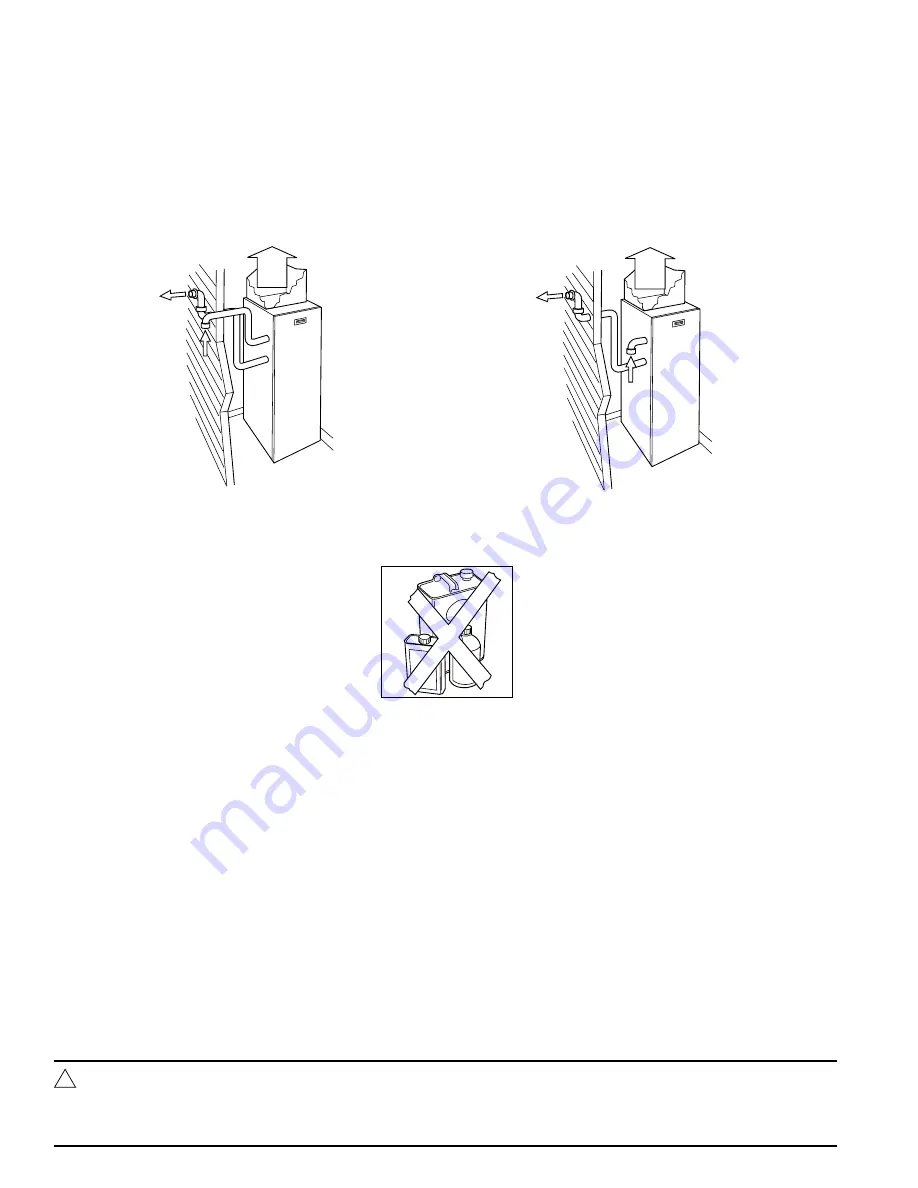
4
In a direct-vent (2-pipe) application, your furnace uses air from outside the home for combustion and vents
fl
ue gas to the outdoors.
This type of application will have 2 pipes running from the furnace to the outdoors. (See Fig. 2.) In this application, the vent and air-
intake pipes must terminate outside the structure and must not be obstructed in any way. Do not block or obstruct air openings on
furnace or spaces around furnace.
In a non-direct vent (1-pipe) application, your furnace uses air from adjacent to the furnace for combustion and vents
fl
ue gas to the
outdoors. This type of application will have only 1 pipe running from the furnace to the outdoors. (See Fig. 3.) The other pipe will
terminate in the same space as the furnace and is the source of combustion air for your furnace. Therefore, the furnace must not be
enclosed in an airtight room or be sealed behind solid doors. It must have adequate air
fl
ow for ef
fi
cient combustion and safe venti-
lation. Do not obstruct the combustion-air pipe in any way. The vent pipe must terminate outside the structure and must not be
obstructed in any way. Do not block or obstruct air openings or space around furnace.
2
3
• Keep the area around your furnace clear and free of combustible materials, gasoline, and other
fl
ammable liquids and vapors.
4
• Do not cover the furnace, store trash or debris near it, or in any way block the
fl
ow of fresh air to the unit.
In addition to the safety rules above, make sure that the following combustion-air requirements are met for non-direct vent applica-
tions:
• Combustion air must be clean and uncontaminated with chlorine or
fl
uorine. These compounds are present in many products
around the home, such as: water softener salts, laundry bleaches, detergents, adhesives, paints, varnishes, paint strippers, waxes,
and plastics.
• Make sure the combustion air for your furnace does not contain any of these compounds. During remodeling be sure the combustion
air is fresh and uncontaminated. If these compounds are burned in your furnace, the heat exchangers may deteriorate.
• A furnace installed in an attic or other insulated space must be kept free and clear of insulating material. Examine the furnace area
when the furnace is installed or when insulation is added. Some insulation materials may be combustible.
• Should the gas supply fail to shut off or if overheating occurs, shut off the gas valve to the furnace before shutting off electrical
supply.
This furnace contains SAFETY DEVICES which must be MANUALLY RESET. If the furnace is left unattended for an extended
period of time, have it checked periodically for proper operation. This precaution will prevent problems associated with no heat, such
as frozen water pipes, etc. See “Before You Request a Service Call” section in this manual
.
WARNING:
FIRE OR EXPLOSION HAZARD
Failure to follow this warning could result in fire, personal injury/death or property damage.
Do not keep combustible materials, gasoline, and other flammable liquids or vapors around your furnace.
!


































